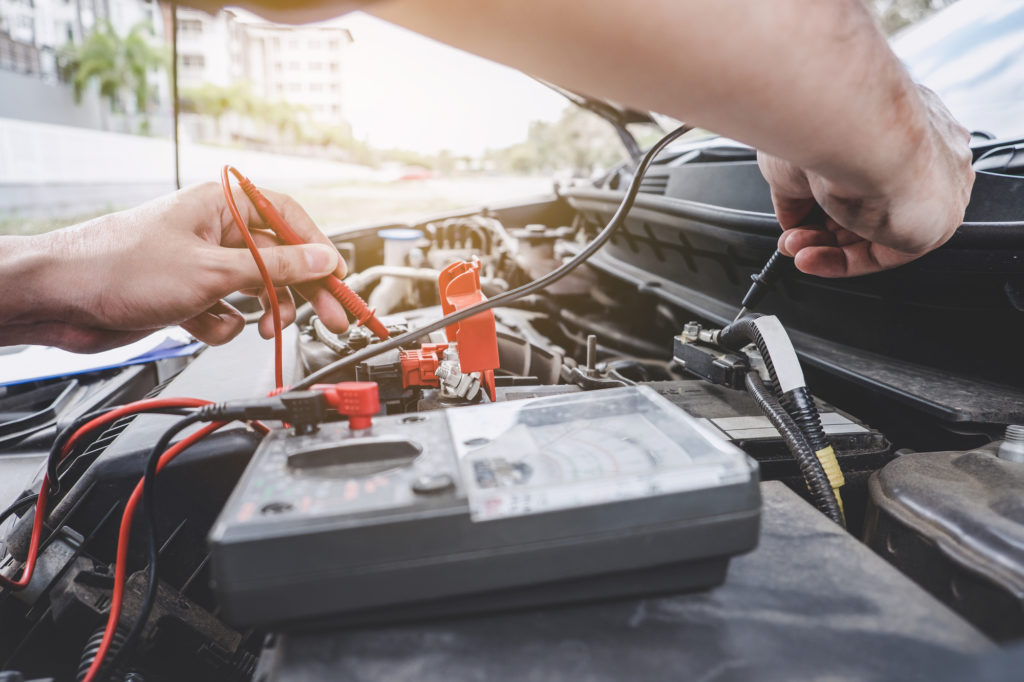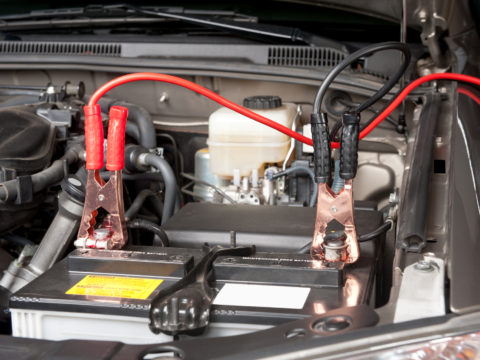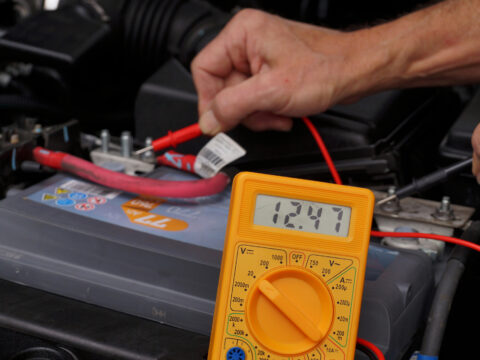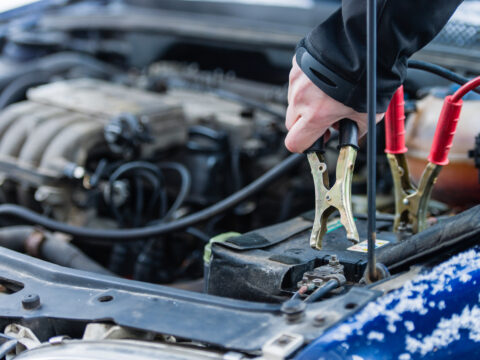Car batteries have to be replaced every couple of years. Failure to do so will result in your car being unable to start. After installing a new battery, you’d expect your vehicle to start smoothly. However, what happens in the instance where your car won’t start even with a new battery?

Contents
Why Won’t Car Start if Battery is Good?
A quick way to ascertain whether or not your battery causes your car issues is to use a jump start. If the battery has a charge afterward, the problem is unrelated to the battery. The next step is to move on to other systems within the car, like the alternator, starter, fuses, and so on.
What Causes a Car Not to Start if the Battery is Good?
After confirming that the batter is in good condition, begin inspecting the following parts.
Faulty Fuses and Fusible Links
If you’re confident that you have a good battery, search for signs such as the smell of burnt wires. Additionally, check for any loose connections as this could keep the electrical from circulating and traveling to your vehicle’s other essential electrical components, such as the starter.
Bad Ignition Switch
Typically a bad ignition shows many signs of going bad before it goes out. Below are the most common symptoms of having a bad ignition switch:
- Vehicle unable to start
- The key doesn’t turn
- Your car may stall
- You can’t hear any noise emanating from the starter motor
- The dashboard of your car will flicker
Starter Malfunctioning
The starter in your vehicle is designed to transfer the electrical current from the battery to the starter solenoid to crank the engine and get it running.
The sign will be indistinguishable as if it were the ignition switch which includes your vehicle not moving.
There’s a possibility that your engine may fail erratically. Get this issue fixed immediately, or it will worsen and relegate to hearing a clicking noise, and your car will remain stationary.
Frozen Fuel Lines
Be aware of frozen fuel lines if you live in sub-freezing temperatures. Sometimes due to low temperatures, the fuel can freeze inside the fuel supply lines preventing the fuel from making it to the engine. In this case, the car won’t start, but the battery is perfectly fine.
Clogged Fuel Filter
The fuel filter prevents dirt and contaminants from reaching that engine within your fuel supply system. As time passes, the filter can become partially clogged or totally clogged.
Partially clogged filters won’t prevent your vehicle from starting. However, a completely clogged filter won’t allow fuel to reach the engine, and therefore the car won’t start.
Bad Spark Plugs
Starting a car’s engine needs an initial electric current, the right amount of fuel, and a good spark to start the combustion system explosion. If the engine fails to receive a spark, it will not ignite the fuel in the cylinder.

What to Do When Your Car Won’t Start and Battery is New?
Try these steps to remedy the battery issue.
Replace the Fuses
- Find the fuse panel in the car, which is usually under the steering wheel.
- Remove the panel cover.
- Find and remove the broken fuse.
- Select a replacement fuse with the correct amperage, and insert it into the designated slot. Note that using the wrong amperage may cause severe problems for your electric system.
- Close the panel and restart your car. Keep a few spare fuses in your glove compartment.
Install a New Ignition Switch
You will need screwdrivers (Phillips and flathead), a ratchet with sockets, and a memory saver to change your ignition switch. Once you have those, follow these guidelines:
- Turn the ignition off after parking your vehicle.
- Use the manufacturer’s manual to install the memory saver, which stores the data from the vehicle’s computer.
- Loosen the clamping bolt from the negative battery cable.
- Remove the screws that secure the bottom steering column cover.
- Take out the lower steering column.
- Remove the screws from the upper steering column.
- Separate the upper steering column cover from the lower steering column cover and remove the lower steering column cover.
- Look behind the ignition key cylinder and find the ignition switch.
- Remove any key locks from the cylinder, if necessary.
- Disconnect the ignition switch from the electrical connector.
- Take out the ignition switch and install the new one.
Replace the Starter
Remember to disconnect the battery anytime you start working on a car, then follow these steps:
- Remove the positive battery cable and the wiring from the starter.
- Remove all bolts that secure the starter, and take the starter out.
- Put any brackets or heat shields onto the new starter.
- Check the flywheel teeth to see if everything is intact, and put the new starter in the proper position. Don’t forget your starter if you have one.
- Place the retainer bolts into the new starter without making them too tight.
- Reconnect the wiring to the starter.
- Connect the battery.
- Start the car and check to see if the problem is resolved.
Replace the Fuel Lines
- Put drip pans beneath the fuel line connections to catch any spills.
- Loosen the connections with the end wrench, going counterclockwise.
- Grab the flat screwdriver to loosen the mounting clamps from the fuel lines.
- Look at the fuel lines fittings and check for damaged or stretched threads that you should replace before putting the new lines in.
- Retrieve the new fuel lines that you got from the parts store. Be sure to tell the clerk the make and model of your vehicle to match the old lines.
- Install the lines by placing them in the same position as the old fuel lines, secured by the end fittings and the mounting clamps.
- Use the flat screwdriver to secure everything. Don’t make the fittings too tight, or the fuel lines will not seal correctly.
Drain the Fuel Filter
This quick-fix requires cleaning the fuel filter and reusing it if it’s metal and isn’t filled with too much gunk and grime. Here’s what to do:
- Disconnect the battery.
- Relieve the pressure from the fuel system before you start.
- Spray the filter with a cleaner and allow it to dry.
- Reinstall it.
- Reconnect the battery.
- Let your engine run.
Replace the Spark Plugs
Ensure that your car is parked on a dry and flat surface and that the engine is not hot, then follow these instructions:
- Take out the spark plugs wires.
- Remove the COP (Coil on Plug).
- Unscrew all of the spark plugs.
- Install the new spark plugs.
- Replace the ignition coils or the spark plugs wires.
- Start your engine.
New Battery But Car Won’t Start Without Jump
If your battery is new, but your car still won’t start without a jump, check to see if your battery is truly charged. When you first put a battery into your vehicle, you should take a short drive for about five miles or let the car run for about 30 minutes to charge it fully.
If this doesn’t fix the problem, look at the alternator or check the ignition.
How Do You Tell If It’s Your Alternator or Your Battery?
One quick way to determine which car part the problem emanates from is to perform a simple test. When the engine starts going, the alternator starts recharging the battery after the vehicle gets the electrical jolt from the spark plugs so that either one could contribute to the car not starting.
Battery or Alternator Test
If the engine isn’t starting, grab a set of jumper cables and try to jump start it. If it starts and it runs fine, but later it needs to get jump started again, it’s probably a battery issue. If the car stalls almost immediately, you likely have a faulty alternator on your hands.
What to Do After Replacing Car Battery?
- Make sure the battery gets clamped into position to reduce vibration and prohibit the battery from failing prematurely.
- Check for corrosion on the battery cables and clean them if necessary.
- Start your engine.
- Allow it to run for a while to get it fully charged.
- Unhook any clamps opposite the order that you initially put them on.














